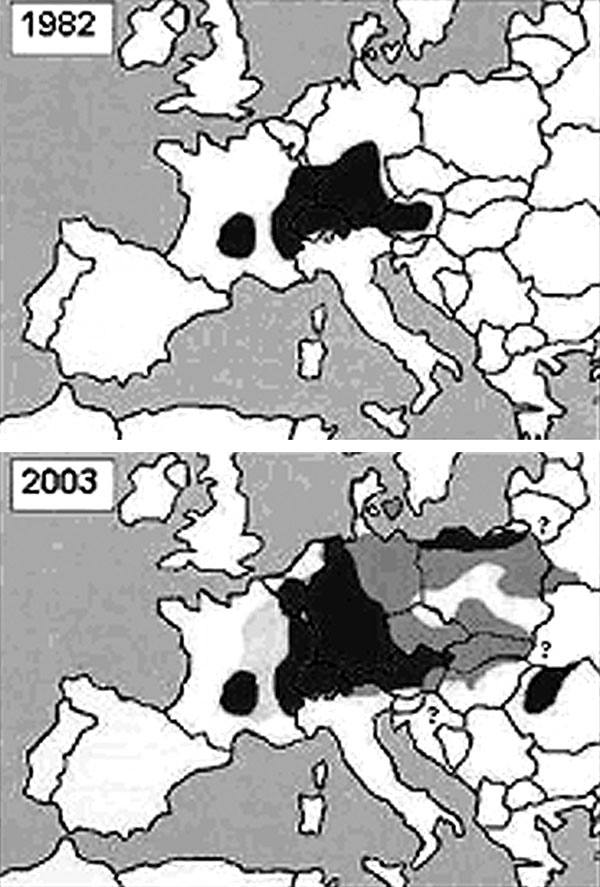Volume 10, Number 7—July 2004
Letter
Echinococcus multilocularis in Northern Hungary
Figure

Figure. Distribution of Echinococcus multilocularis in Europe (1,2,4, this study). Black areas: Infection was reported in men, foxes and or rodents. Dark gray areas: Infection was described only in foxes and or rodents. Light gray areas: Only human cases were noted. White areas: E. multilocularis free territories. Question marks: The presence or appearance of the parasite is projected. Note: The prevalence of infection in foxes is similar in the majority of the affected countries.
Page created: January 27, 2011
Page updated: January 27, 2011
Page reviewed: January 27, 2011
The conclusions, findings, and opinions expressed by authors contributing to this journal do not necessarily reflect the official position of the U.S. Department of Health and Human Services, the Public Health Service, the Centers for Disease Control and Prevention, or the authors' affiliated institutions. Use of trade names is for identification only and does not imply endorsement by any of the groups named above.